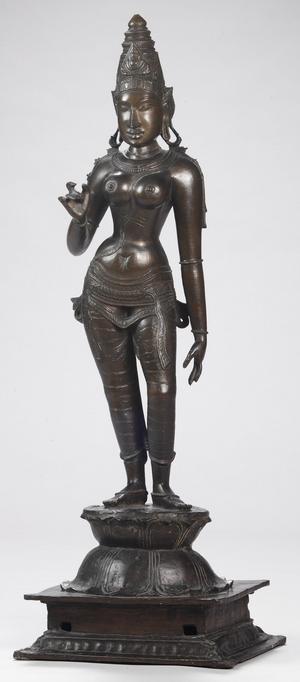Collections in the National Museum of Denmark

The National Museum contains large collections of old but also more recent artefacts, sketches, maps, photos, and films from Tranquebar and its nearby surroundings. During the Danish era in Tranquebar 1620-1845, a large number of the items were brought to Denmark as private collections by retired colonial officers and missionaries. These items were often sold or presented to the Danish King’s Kunstkammer (o.1650-1825) or entered museums later.
Furthermore, numerous everyday items such as tools, utensils, jewelry and ritual equipment were collected by Danish officers in Tranquebar on direct request from Christian Jürgensen Thomsen, who in 1839 took over as director of the Royal Art Museum. The Royal Art Museum (1825-1865) contained all the surviving ethnographical items from the kunstkammer collection.
In 1849 Thomsen opened the first and for many years finest general ethnographic museum of the world, the Royal Ethnographical Museum (1845-1892). The collection became part of the National Museum when this museum was founded in 1892.
Several of the items, maps, photos and films from Tranquebar, both old and more recent ones, are visible in the museum's Online Collections (in the search window write: Tranquebar or Trankebar).
Presented below is only a small sample of the collections from Tranquebar kept by the National Museum of Denmark:
Sculptures found in Tranquebar from the Chola Dynasty (c. 850-1270)
Maps and Sketches from Tranquebar (c. 1670-1845)
South Indian Artefacts in the Royal Danish Kunstkammer (c. 1650-1825)
South Indian Religious Art (c. 1700-1900)
South Indian Company Paintings (c. 1770-1850)
Items from Tranquebar (1800-1850)
Photos from Tranquebar (1880-1980)
Items from the Pattanavar Meenavar fisher community in Tranquebar (1981)
Items from the Paraiyar and Chakkiliyar Communities in Tranquebar (2007)
Text: Professor Esther Fihl and Research Assistant Caroline Lillelund, 2015
Web design and supervision: Assistant Curator Bente Gundestrup
Language editing: Research Assistant Manasa Bollempali
